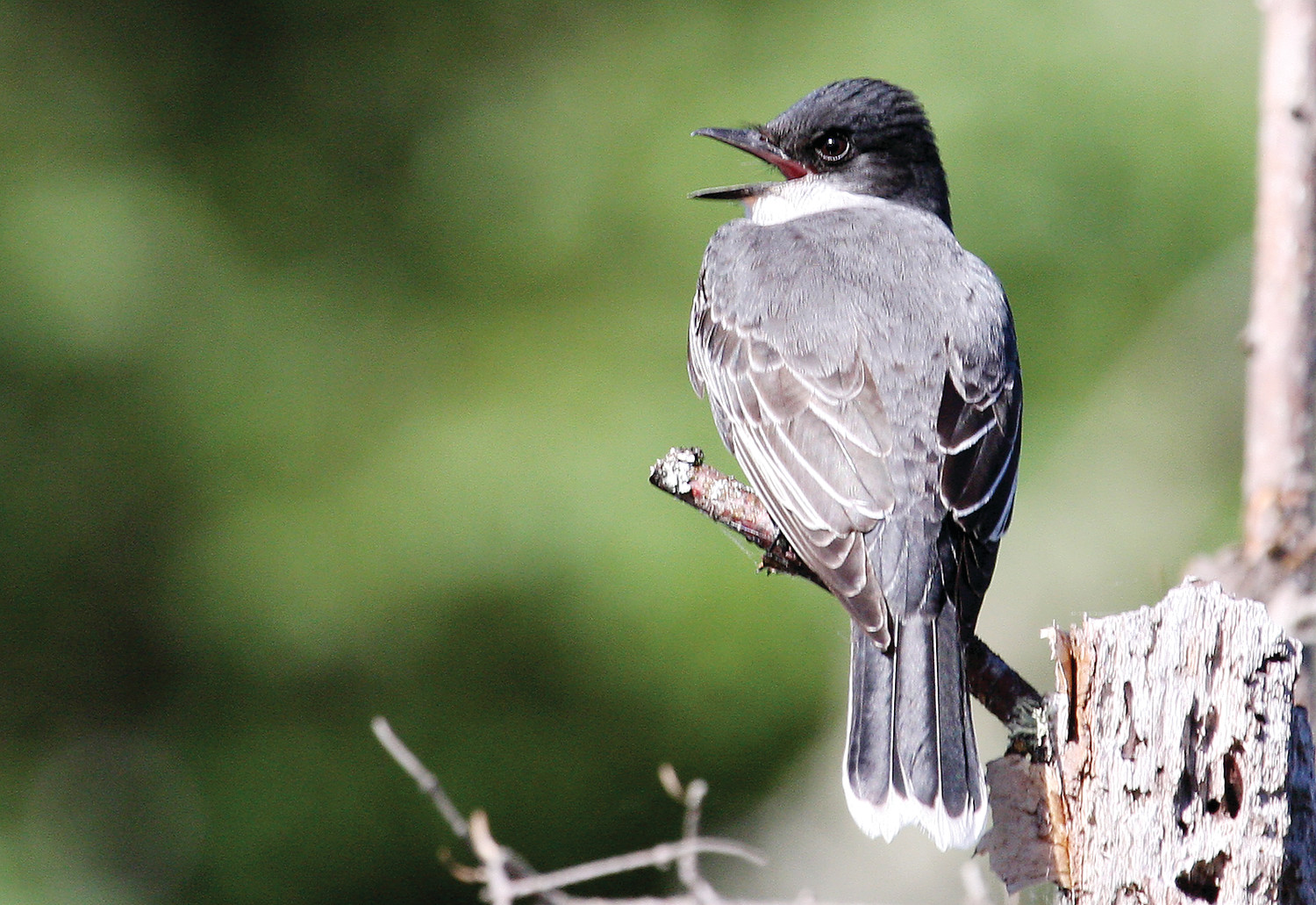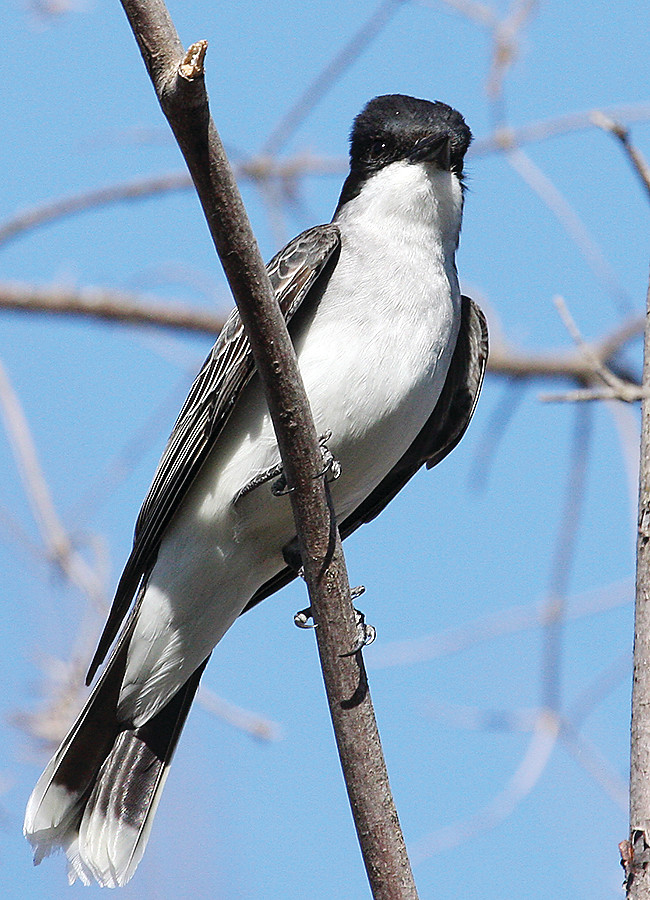Support the Timberjay by making a donation.
Kings of the North Country
The eastern kingbird used to reign over every beaver pond. Now they’re hard to find
It used to be that every beaver pond in the North Country had its petty dictator— and it wasn’t a beaver. These days, eastern kingbirds are a lot tougher to find, but their will to dominate …
This item is available in full to subscribers.
Attention subscribers
To continue reading, you will need to either log in to your subscriber account, or purchase a new subscription.
If you are a current print subscriber, you can set up a free website account and connect your subscription to it by clicking here.
If you are a digital subscriber with an active, online-only subscription then you already have an account here. Just reset your password if you've not yet logged in to your account on this new site.
Otherwise, click here to view your options for subscribing.
Please log in to continue |
Kings of the North Country
The eastern kingbird used to reign over every beaver pond. Now they’re hard to find
It used to be that every beaver pond in the North Country had its petty dictator— and it wasn’t a beaver. These days, eastern kingbirds are a lot tougher to find, but their will to dominate remains unchanged and it’s summed up well in their scientific name, Tyrannus tyrannus.
Despite being exceedingly bossy, I can’t help but like these noisy, nearly robin-sized flycatchers, which are members of a group of similar species known collectively as the tyrant flycatchers.
A number of members of this group of flycatchers appear to be experiencing population declines, and that’s certainly been the case with the eastern kingbird.
Sighting one of these used to be a regular occurrence in our area a quarter century ago, when it seemed virtually every beaver pond was ruled by one of them. These days, they’re few and far between, so I was surprised to see that one had recently taken up residence at our nearby beaver pond. I had walked over the other day to see what was happening, and there he was, ruling the roost.
Kingbirds certainly earn their reputations. They seem to have no fear when it comes to telling other birds who’s in charge. They routinely chase off much larger birds, even hawks, that happen to fly over their territory and they’ve been known to knock other birds off their perches at times.
Like most kings, kingbirds actually do have a crown, though it’s rarely seen, except when they’re attacking one of their “subjects.” The crown consists of a patch of colorful feathers on the top of their heads, which can range from yellow to red. The insides of their beaks are reddish as well, and they often gape open their mouths and extend their crown when attacking another bird, no doubt presenting a somewhat fearsome visage.
While it’s not universal, in my experience, kingbirds in our region are tied very closely to water, which is undoubtedly beneficial for a bird that relies on flying insects for sustenance in the summer. While they seem to strongly prefer beaver ponds in the North Country, they have an immense summer range and undoubtedly use a wide variety of habitats for nesting elsewhere. Despite its name, the eastern kingbird is not confined to the eastern portions of the U.S. In fact, it can be found in all but the desert southwest and Pacific Coast in the U.S. and ranges as far to the northwest as Great Slave Lake in northern Canada.
Despite its fearsome reputation on its summer territory, the eastern kingbird is a mild-mannered fruit eater on its wintering range in the Amazon. While aggressively territorial on their nesting grounds, they’re gregarious in winter, spending most of their time in loose flocks moving through the rain forest.
As I mentioned, this is a species that is declining in population, although it’s not clear why. It certainly isn’t from a shortage of beaver ponds in our region. Beaver have proliferated as demand for fur is at an all-time low and the evidence of their activity is everywhere in the North Country.
Most likely, the kingbird is suffering from habitat loss in the Amazon as well as the effects of the proliferating number of human-erected hazards along their traditional flyway through Central America. Every window, cell tower, or any kind of structure that humans erect becomes a potential hazard to wild birds. Add to that the millions of cats that humans keep as pets but allow to roam free as bird killing machines, and it’s remarkable that every bird species isn’t in serious decline. But even as some manage to negotiate our increasingly human-impact world, others haven’t been so successful. Kingbirds aren’t threatened with extinction, at least not yet. But their decline has been documented and if it continues, the sight of these feisty little autocrats riding herd over a North Country beaver pond could someday be a distant memory. And that would be a shame.









